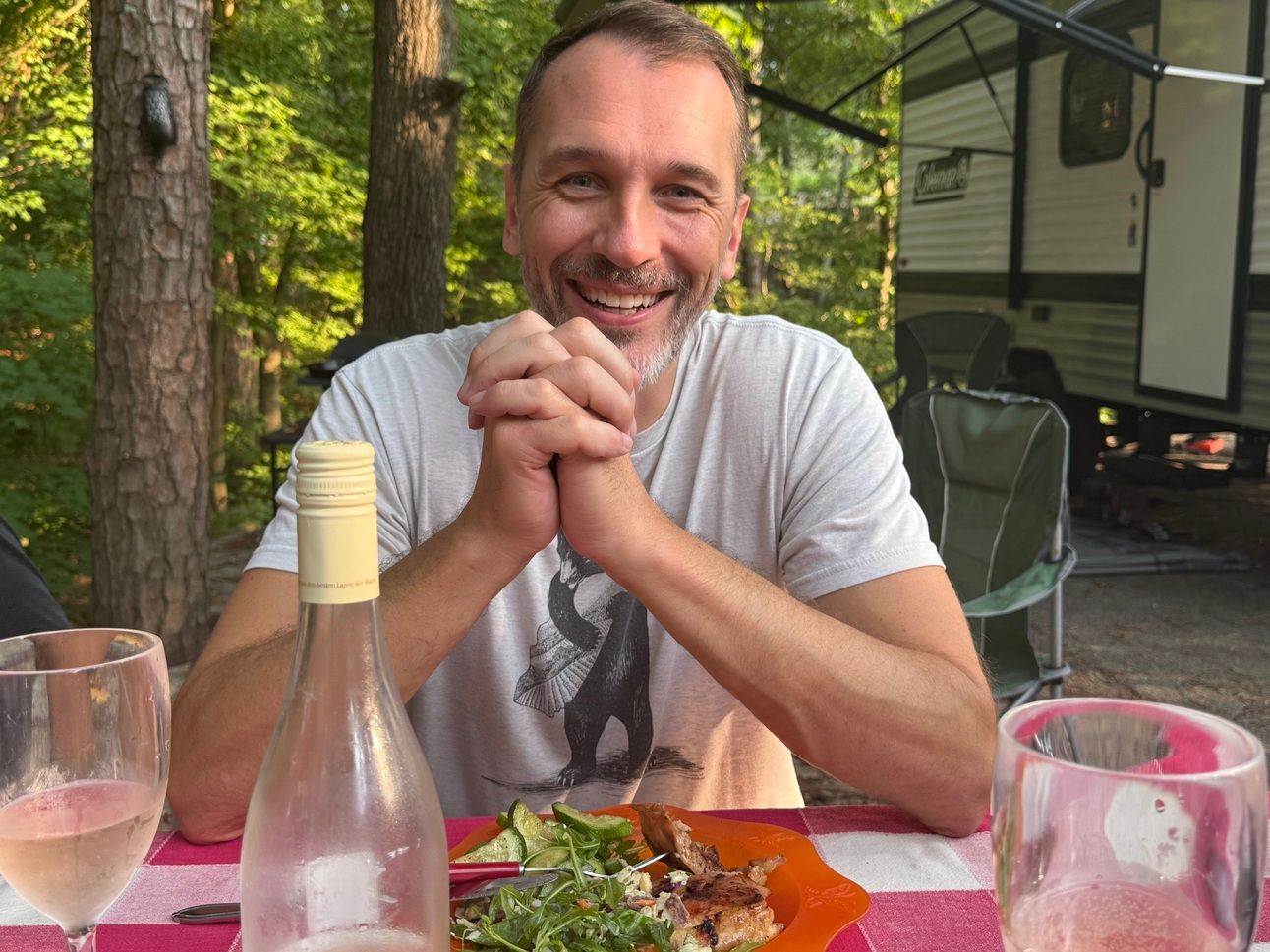- The Conversion Ledger
- Posts
- 3,100 Miles and the Power of Time Off
3,100 Miles and the Power of Time Off
Sub-head
I’m not talking about CRO this week. If that’s all you’re here for I don’t blame for your hitting “Archive” now.
I’m writing this from the passenger seat while my fiancée takes the wheel through Georgia. We’ve been on the road for nearly two weeks with two teenagers, camping and visiting universities, with about three days left before getting home, just in time for my 51st birthday.
We took my to-be-step-daughter to tour Emory, Vandy, Duke, UNC, made a 4th of July stop with friends, then will cap things off camping near St. Augustine before heading home. An epic roadtrip with a truck and camper.

Stone Mountain, Georgia
Total mileage: 3,100.
Total new memories: countless.
It’s the longest “break” I’ve ever taken from work. Except, not really.
I still took some client calls. I still checked in with the team. I even squeezed in a quick sales call, and missed a referral call at 7:30 a.m. instead of 8:30 because we changed time zones.
Classic founder move, right?
But here’s what hit me and why I’m writing you today:
There’s a huge difference between being physically away and being mentally away.
Even though I was technically on vacation, my mind never fully checked out. It took ziplining, white water rafting, and camping to remind me what happens when you actually pause: you recharge parts of your brain you can’t reach in a meeting.
My Team, My Sleep-At-Night Factor
While I was 85% off, my team absolutely crushed it. If you’ve worked with us, you know what I’m talking about. Lori, Callen, Nick, Andrea, Henry, Charms, Luna, Grant. These folks held the fort so I could camp with bunnies in Shenandoah Valley and get quality time with my family.
It’s a gift to work with people who bring their A-game whether I’m in the office or off the grid. That trust is a huge reason we can keep the bar high for our clients.
Generous Time Off ≠ Slacking
A book I read a while back by Dan Sullivan really stuck with me. He shared how having a generous vacation policy not only improved employee retention, but also the work quality and profitability of the business. Yep, paying people not to work improved profitability.
At Surefoot, we walk that talk with 18 paid holidays, 100 hours of PTO that scales up to 360 hours by year five.
Why?
Because time away is an investment, not an expense.
When people take meaningful breaks, they don’t come back less engaged, they come back better. More creative. More strategic.
On this trip, I felt it myself. After recharging, I’m buzzing with new ideas for how we are going to weave AI deeper into our client strategy and our internal processes. Those breakthroughs don’t happen if you’re perpetually fried.
Your Move
If you’re running a team, I’d challenge you to look at your PTO policy, and more importantly, your own behavior.
Are you showing people it’s safe to take true time off? Or are you secretly proving the opposite by checking emails every day of vacation?
High-trust teams thrive on seeing their leaders actually rest.
I’ll leave you with this: If you want to do better work, give yourself permission to pause.
Book I Recommend
On this road trip, I listened to Hidden Potential by Adam Grant. It’s a must-read (or must-listen). Grant lays out how most people limit themselves without realizing it and how the biggest leaps forward often come from the smallest, quietest moments of reflection and growth.
If you want to push past your current ceiling, Hidden Potential will hit you in all the right ways.
Looking forward,

P.S. If you’ve got a PTO or vacation ritual you swear by, hit reply. I’d love to hear how you unplug.
How valuable was this week's newsletter? |
P.S. Ready to grow revenue without having to grow traffic? Let’s talk.